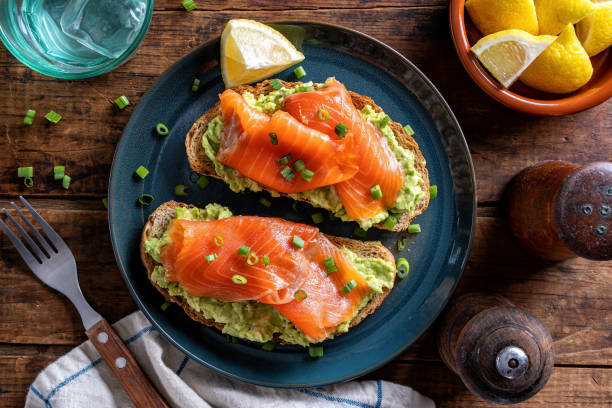Salmon is a popular type of fish that is widely consumed around the world. It is known for its high nutritional value, including its calorie content. In this article, we will discuss the calorie content of salmon and how it fits into a healthy diet.
First, it’s important to understand what a calorie is. A calorie is a unit of measurement that represents the amount of energy that is required to raise the temperature of 1 gram of water by 1 degree Celsius. The human body requires a certain amount of calories each day to function properly, which varies depending on factors such as age, sex, weight, and activity level.
The number of calories in salmon can vary depending on the cut and cooking method. A 3.5 ounce (100 gram) serving of cooked salmon contains approximately 199 calories. This serving size also provides 26 grams of protein, 13 grams of fat, and 0 grams of carbohydrates. Of the 13 grams of fat in a serving of salmon, about 2 grams are saturated fat and the rest is composed of monounsaturated and polyunsaturated fats, which are considered to be “good” fats.
Salmon is a lean protein source, with a relatively low calorie content compared to other animal proteins like beef or pork. A 3.5 ounce serving of cooked lean beef, for example, contains about 250 calories, while the same serving size of cooked pork tenderloin contains about 180 calories.
Now, let’s talk about the calorie content of salmon. The calorie content of salmon can vary depending on the type of salmon, whether it is cooked or raw, and how it is prepared. Generally speaking, a 3-ounce serving of cooked salmon contains about 200-250 calories. This serving size is similar in size to a deck of cards.
It’s worth noting that salmon also contains healthy fats, including omega-3 fatty acids. These healthy fats can help to improve heart health, lower inflammation, and reduce the risk of certain chronic diseases. However, it’s important to keep in mind that consuming too much salmon, or other foods high in fat, can contribute to weight gain if you don’t balance it with enough exercise and a healthy diet.
When it comes to a healthy diet, it’s important to consume a variety of nutrient-dense foods, including fruits, vegetables, whole grains, lean proteins, and healthy fats. Salmon can be a great addition to a healthy diet because it is a rich source of nutrients, including protein, vitamin B12, vitamin D, and omega-3 fatty acids.
To include salmon in your diet, you can try grilling it, baking it, or pan-searing it. you can also try to add it to salads, sandwiches, and soups. Try to vary your options and try it in different dishes to prevent getting bored of it.
In addition to being low in calories, salmon is also a great source of many essential nutrients. The omega-3 fatty acids found in salmon have been shown to have a variety of health benefits, including reducing inflammation, improving heart health, and supporting brain function. These healthy fats also help to lower cholesterol levels and reduce the risk of heart disease.
Salmon is also an excellent source of vitamin D, a nutrient that is essential for bone health. Many people are deficient in vitamin D, particularly during the winter months when there is less sunlight. Eating salmon can help to boost your vitamin D levels and improve bone health.
Salmon is also a good source of other essential vitamins and minerals, including vitamin B12, selenium, and potassium.
It’s also important to keep in mind that there are other types of fish that can be lower in calories and also high in nutrients. For example, a 3-ounce serving of cod contains about 80-90 calories, while a 3-ounce serving of tilapia contains about 100-110 calories. So you have to pay attention to the type of fish you choose and their corresponding calorie content.
In conclusion, salmon is a nutritious and delicious fish that is low in calories and high in essential nutrients. A 3.5 ounce serving of cooked salmon contains approximately 199 calories, 26 grams of protein, 13 grams of fat, and 0 grams of carbohydrates. It’s also a great source of omega-3 fatty acids, vitamin D, B12, selenium, and potassium. Eating salmon regularly can improve your overall health, reducing the risk of heart disease, supporting brain function, and promoting healthy bones. Furthermore, there are many ways to prepare this fish, including grilling, baking, broiling or pan-frying, keep in mind that avoid overcooking the fish to preserve its flavor and nutrients.

 Home
Home Health
Health Diet & Nutrition
Diet & Nutrition Living Well
Living Well More
More













